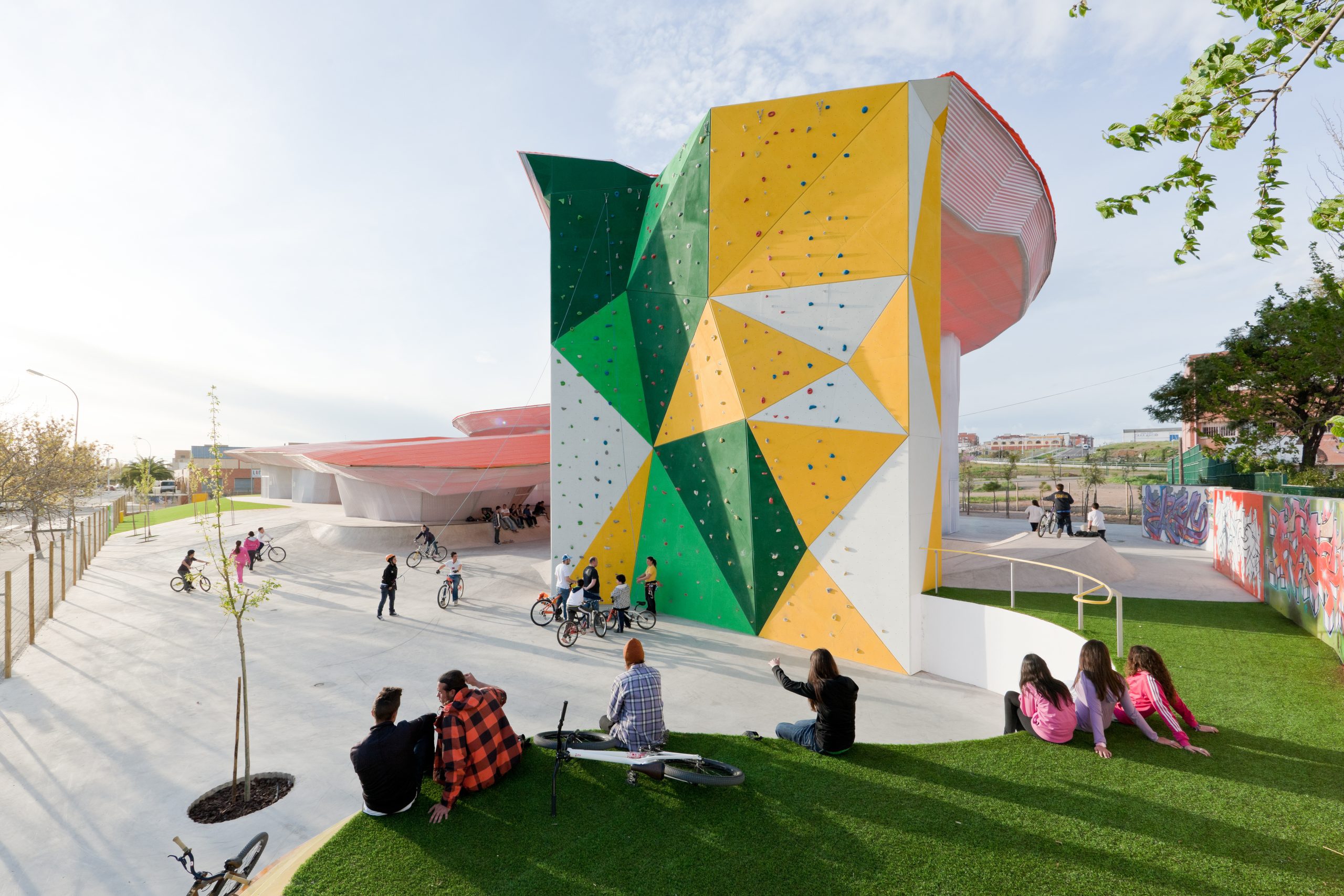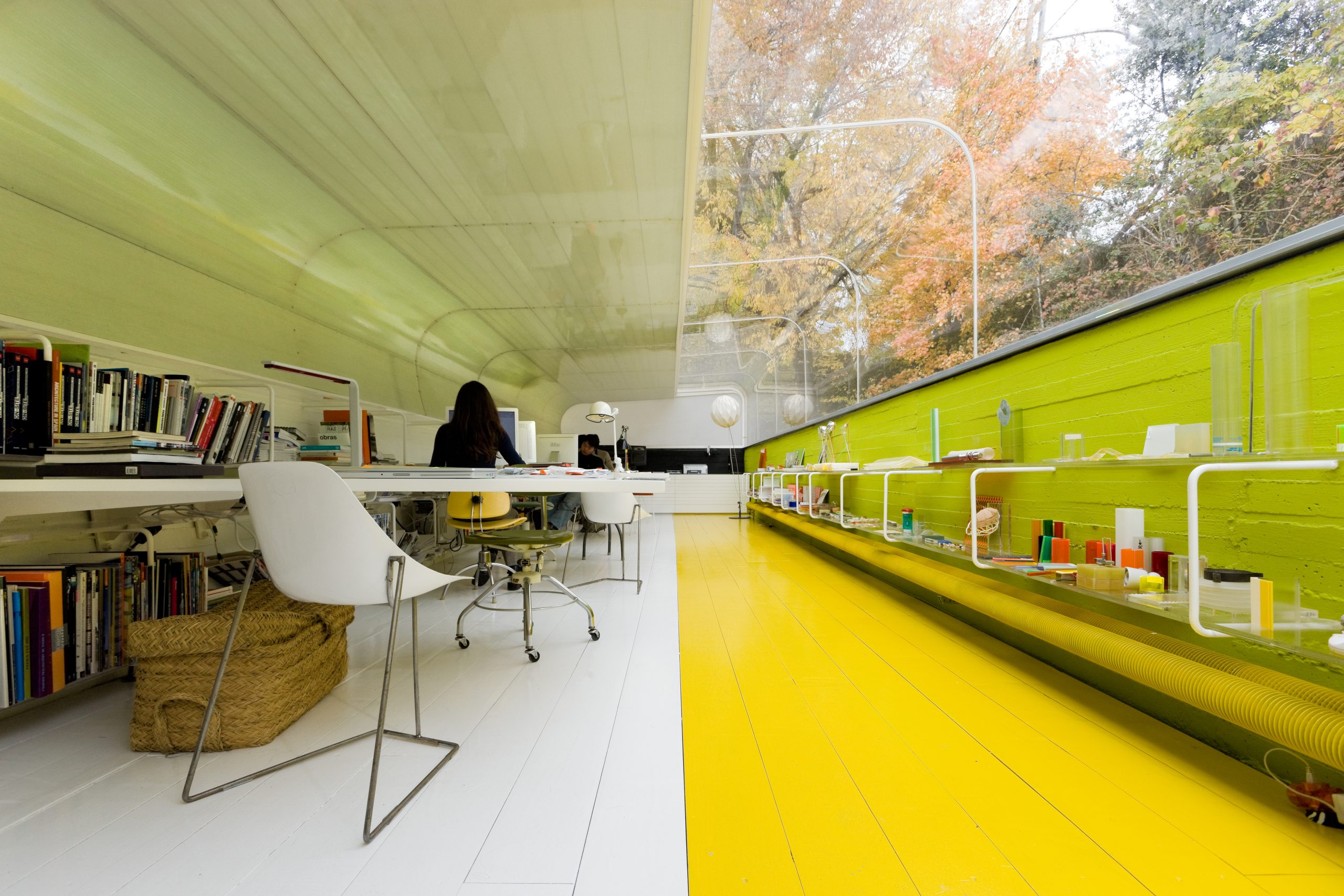ART4D SPOKE WITH THE MADRID-BASED ARCHITECTURE DUO ABOUT THEIR USE OF UNCONVENTIONAL MATERIALS AND COLOR, AND THE VARIOUS MANNERS IN WHICH TIME COMES INTO PLAY…
Could we start with your use of color? It is a defining characteristic of your work.
The approach we take to color is the same approach we take to everything in architecture meaning that it is kind of open. We have a big palette. It is like the structure of a building, you need to think about if you want concrete, steel or wood depending on the use of the building and on the relation of the user or the site. But depending on different factors, at the end you are using one color together with one material, one structure and one shape or another shape. So it is more dependent on a lot of different factors that we play with – the dirt and the temperature and even the feeling that you want to incorporate to the people – all those things come together and give you a color at the end.
Apart from being economical about it, do you have any obsession with plastic or interest in plastic especially?
We are happy with every material so at the end of the day it is more about that we are just open to everything and can use whatever material so probably plastic is the less common or the less known material. It is not something new that we are bringing to the market; all the materials that we are using are old materials. Wood or concrete is opaque so when you go for translucency or transparency the materials you can use are glass, but glass is super expensive and heavy and weak. In the end we are searching for some solution or some kind of condition in the material that gives you the result you want and then we say ok – let’s use this.
But this kind experimentation or research consumes time. With each project do you have enough time to get into the material in this way?
Yes, it takes time but I think it is important. I think it is part of our role as an architect to also try to experiment with things. So, I mean that we treat every project differently. If we have already used one material in one way, and we know that it is already tested and is working, we try to avoid it and pass to another material so that at the end you have a chance to play a bit with the material and some with the economy and with the client too, as they have to be kind of open to those things of course.
You use a lot of polycarbonate in your architecture, but how long is the lifespan of this material?
A fact that we haven’t talked about is the process of time on these materials. We love the passing of time in concrete and we love the passing of time in wood but we also love the passing of time in plastic. They are not new materials; the first ones are from the last part of the 18th century or the beginnings of the 19th century and you have a lot of examples of these materials. I don’t know if you remember the Frei Otto Olympic Stadium in Munich? The whole roof and the whole building is made with acrylic from the 60s or 70s. They removed it in 2005 but we were visiting the building just one year before they removed it and there was just a little bit of yellowing of the acrylic. Normally people think that plastic needs to be always sparkling and completely perfect but 35 years after the construction it was really beautiful and that showed you that it is was not a completely new building.
For me, as long as a material receives the passing of time in a way that it doesn’t crack and it doesn’t deteriorate it is ok. The polycarbonate is almost indestructible and you can keep it forever. For the playground that we did in Merida Spain the whole building is made of polycarbonate, absolutely. Well, the skate ramp is concrete but the central part of it is polycarbonate and we chose polycarbonate in that case because it was really cheap but also because it was almost indestructible, we tested it with the skaters going ‘boom!’ against the panel and it was fine so it is a really, really strong material in that way.
I’m also quite interested in how you work with the weather, with your studio for example.
Weather and climate are really important and really big for us. In every project we are very aware and very conscious of that and it is completely different if we are working in LA or if we are working in London. Depending upon that and the shape of the building the materials that we need to use are completely different and even the program can change completely. Climate is something that you can do a lot with and that you can bring to every project.
In our studio, when it rains or in the rare case that it would snow in Madrid it is really nice, one of the best moments because the acrylic that we have on the roof is very soft for the rain so it is not a strong sound and it is really good. The acrylic is also really good for transmission where you can employ the same amount of material and the transmission of heat and of cold is much lower, it is one tenth of glass so it is good for that also. It is important to feel the climate outside and bring the exterior into the interior.
How do you position the line between academics and training as an architect with the real process of making architecture in the way that you do?
We are outside of the academy and that was a personal decision because once we had been in the studio we wanted to be there; but only two years ago we decided to go to MIT in Boston and to teach that year because they employ process and making there in a way that is really important. We went there and did that pavilion in Kenya, which is a clinic and a kind of a school for the area, but I think it was also really interesting for the students to make that connection with the real world. Normally they have access to all the machines that you can imagine but there you bring in another sense by being in a very remote place where you need to adapt to the local materials. And at the end of the day it was for them I think really important.
Ok, I think that should be it for us, thank you very much for your time.
Thank you for having us.









